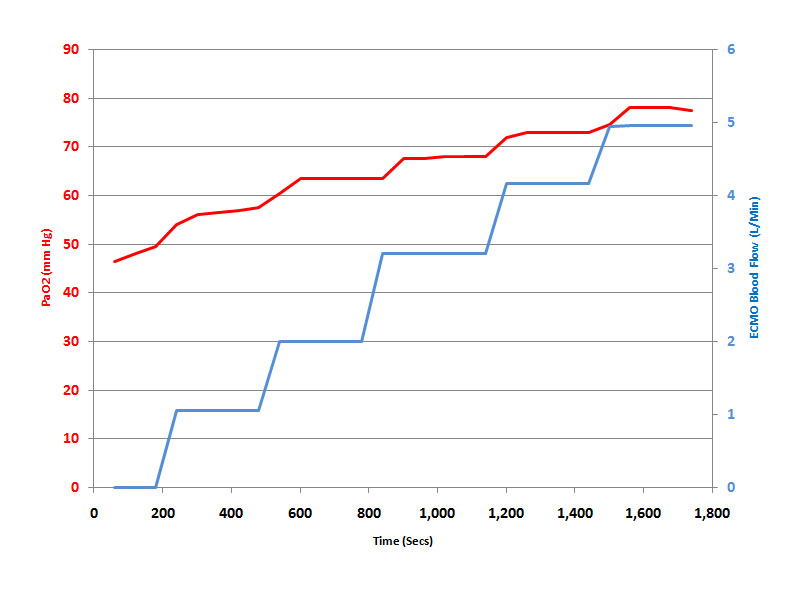The effect of an increase in ECMO Blood Flow Rate on PaO2.

The data shown above are from a simulated patient with severe respiratory failure and an oxygen consumption of ~200 ml/min on VV ECMO. The patient has been completely paralysed with pancuronium and is ventilated on 100% oxygen with a tidal volume of 400 mls at 10 breaths per minute.
The blood flow through the VV ECMO system has been increased in a step-wise manner from 0 to 5.0 lpm. At the same time, the ‘Sweep Gas’ rate has also been increased, in order to maintain a constant V:Q ratio in the artificial lung of 1:1. The patient’s native cardiac output is about 7.5 L/min at the start of the experiment, but falls to about 5 lpm at the end(as his hypoxia and hypercarbia resolve).
As can be seen, the PaO2 rises progressively from under 50 mm Hg to just under 80 mm Hg as the blood flow through the artificial lung is increased.
Thus we can appreciate another important concept of VV ECMO – that, the efficacy of arterial oxygenation is determined in large part by the blood flow through the device.
